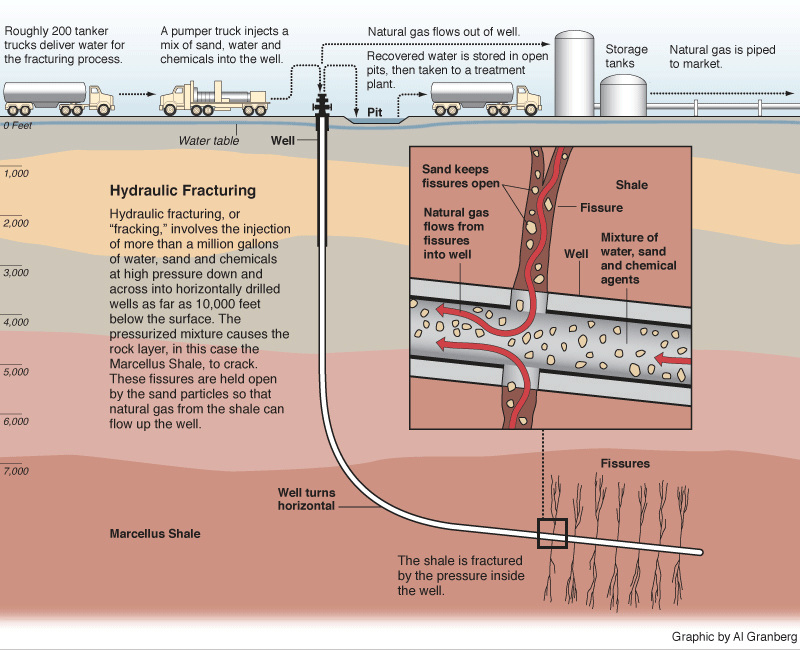 |
| This shows a brief summary of the hydraulic fracturing process. |
Title: Next In Line For A Fracking Boom, California Looks At The Rules
Summary: This article talks about hydraulic fracking, which is when we receive many resources that are useful by drilling into the ground. Hydraulic fracking is very controversial and many people believe it should be stopped. It has caused a oil boom is PA, TX. The oil companies in Texas have been spending 1 billion dollars a month on drilling. The arguments people have to why it is bad, is because it can cause health problems to the people that live in the area. California could be the next big area for fracking and companies would have to test before and after fracking. Drillers are not required to tell the state that they are fracking in and area, but with the new laws placed in California they would have to tell where and when they are fracking.
Opinion/ Reflection: I believe hydraulic fracking should continue, if companies take care of the areas they are fracking in. We need to get our resources some how and we will eventually run out of oil etc., so we should receive as much of that resource as possible. It is a very controversial topic and people have different opinions based on moral and religious views, but I think we should keep fracking. This topic will be a big environmental issue and it reminds me of the controversial topic of offshore drilling, which is still being discussed, and people still argue whether or not we should continue off shore drilling. I believe as long as we get what we need, we should continue with getting our oil etc., but we need to monitor the companies to make sure that they are being as environmentally friendly as possible.
Questions: Should we stop hydraulic fracking? Why or why not?
Is hydraulic fracking an important issue to you? Why or why not?
Do you believe Pennsylvanians should be worried about health problems in there area from hydraulic fracking? Why or why not?
 The Labeling of GMO's on Food Products
The Labeling of GMO's on Food Products











